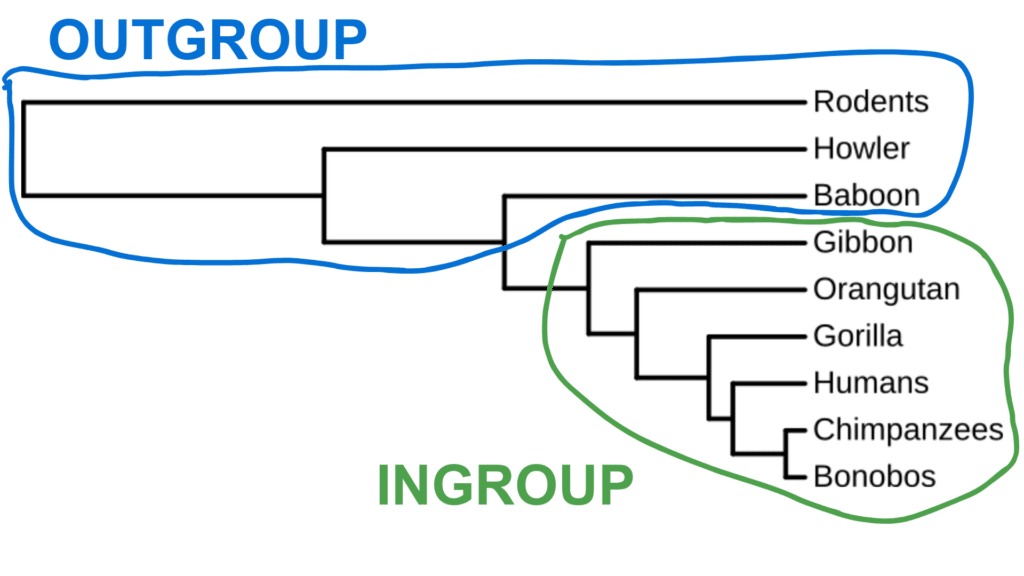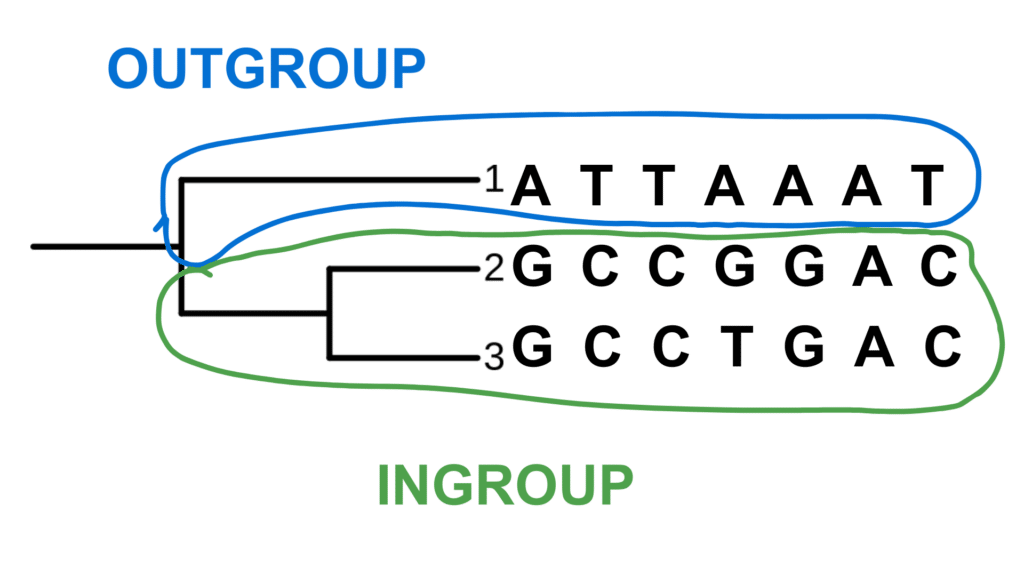Ingroups and Outgroups
When building a phylogeny, you’ll often hear about ingroups and outgroups.

The ingroup is the group of organisms we wish to study through a phylogeny.
An outgroup is a taxon or taxa that is outside the scope of our study, but whos genetic information is useful for deciphering phylogenetic relationships.
Think of the outgroup as a control and the ingroup as the experimental trial. The outgroup is what the phylogenetic reconstruction methods use to compare the members of the ingroup between one another.
Remember back to the genetic sequence example. In this case, our research question may only focus on B and C. This makes the group containing B and C our ingroup. Since we compared species 2 and 3 to species 1, then species 1 would be our ingroup!

A good outgroup will be closely related to the ingroup but still biologically distinct. Ideally, with robust genetic sampling.

